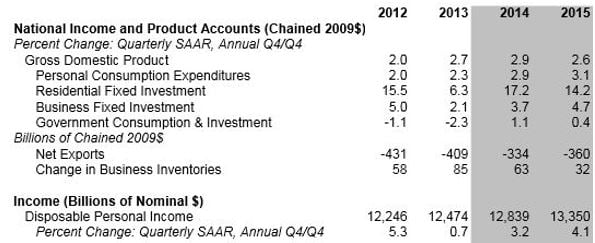A moderate economic growth forecast for 2014 has been published by Fannie Mae’s Economic & Strategic Research Group.
Despite a slow start to the first quarter of 2014, caused mainly by abnormally severe weather conditions in many parts of the US, a modest acceleration remains in the forecast.
After strong growth during the third and fourth quarters of 2013, the Economic & Strategic Research Group (the Group) forecasts weaker Q1 2014 GDP (gross domestic product) growth, mainly due to:
- A significant correction to the unsustainable accumulation of inventories reported during the last two quarters of 2013, which exceeded levels of sales.
- Extremely severe weather conditions may have caused a fall in construction activity and personal spending.
(Economic Forecast: February 2014 – Source: Fannie Mae)
Private sector activity boosting growth
However, strong activity in the private sector is expected for the whole of this year, which is forecast to help boost economic growth to 2.9% in 2014, compared to 2.9% in 2013.
Fannie Mae Chief Economist Doug Duncan, said:
“Our February forecast continues our theme for the year, ‘Private Forces Move to the Fore,’ despite the fact that first quarter growth is likely to be slower than the last two quarters of 2013. Some may attribute the slower pace of growth to the cold weather, which was combined with slower employment growth going into 2014 and other cross currents that have appeared in global economic and financial market conditions.”
“However, we expect the impact from special factors currently weighing on activity to reverse and believe we will see sufficient pickup later in the year to meet our forecast expectation of 2.9 percent real growth in 2014.”
Weather hurt retail sales
Retail growth of 4.1% was forecast earlier this month by the National Retail Foundation for 2014, raising the previous 3.7% growth estimate. Online retail sales are expected to rise by 9% to 12% this year.
According to the Department of Commerce, severe January weather undermined retail sales figures for that month, as shoppers ventured out of their homes less often and traveled shorter distances.


